European Travels 4 – From Utrecht to Lake Constance
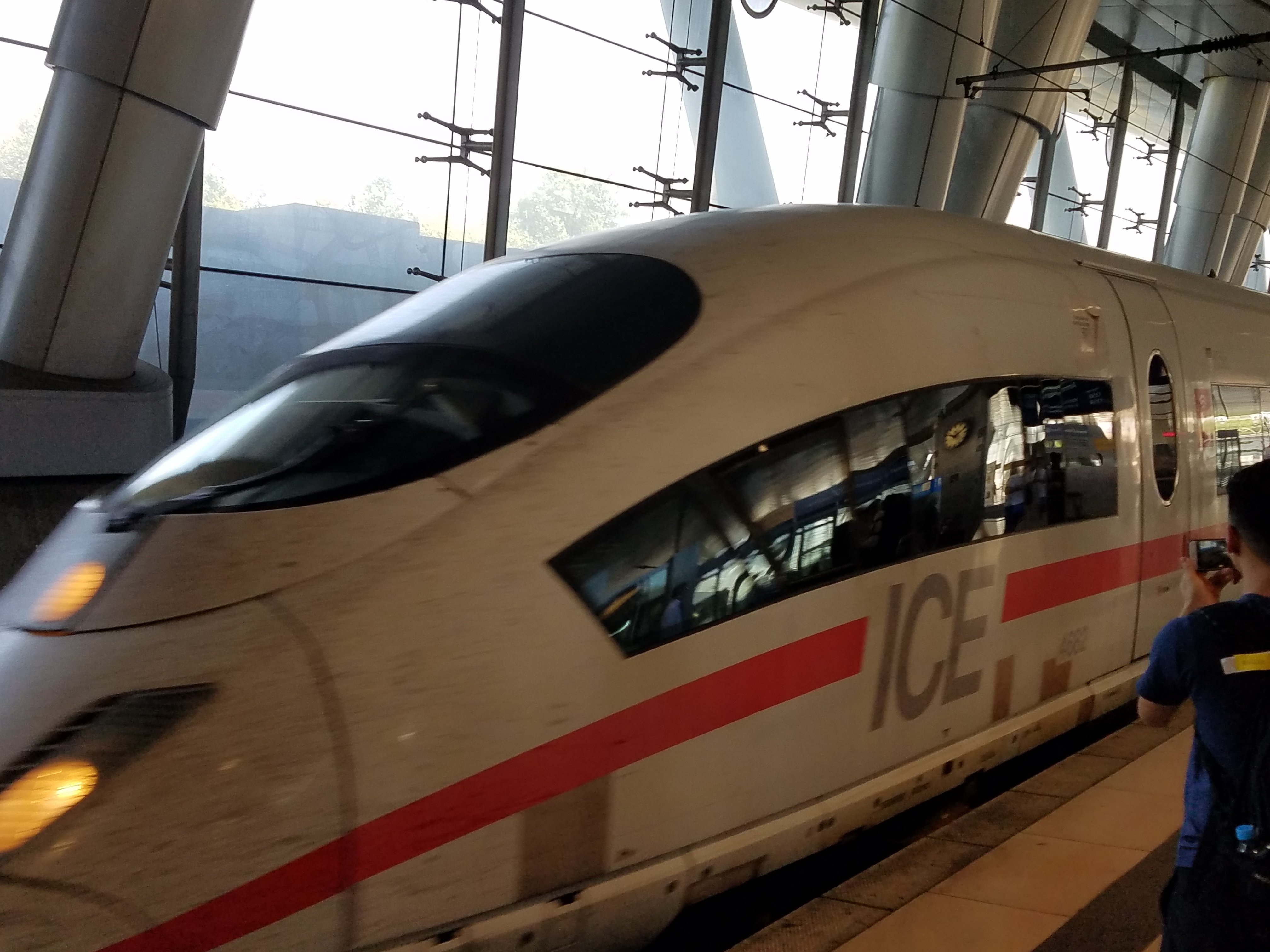 Traveling to and exploring Lake Constance
Traveling to and exploring Lake Constance
In an earlier post, I wrote about Dutch Canal Boating. After a fun trip around Dutch rivers and canals, we said goodbye to our American friends. We then began the next stage of our European travels.
In the Dutch city of Utrecht, we boarded one of the fabulous European Intercity trains. It took us through Cologne and along the Rhine River to Basel. There we changed to a regional train.
On previous train trips we had always regretted that we could not access our website or google sights we passed by (without depleting our phone data allotments!) This time we still had our Webspot pocket WIFI we had rented for canal cruising.
We were also able to follow our train route on the iPad map and find information about the various castles we passed along the Rhine.
In Basel, the Rhine bends sharply to the east and for long stretches makes a natural border between Germany and Switzerland.
Initially, the train tracks follow the Rhine River Valley. At dusk we passed the well-known “Rheinfall of Schaffhausen” - the waterfalls of the Rhine at the Swiss town of Schaffhausen. (German students, don't forget to note the spelling of “Rheinfall” versus “Reinfall”! The latter means “letdown, failure, flop, disaster.” It is often used in wordplays with its sound-alike cousin.)
Überlingen at Lake Constance
Our destination that day was the city of Überlingen, located on one of the two major arms of the "Bodensee", 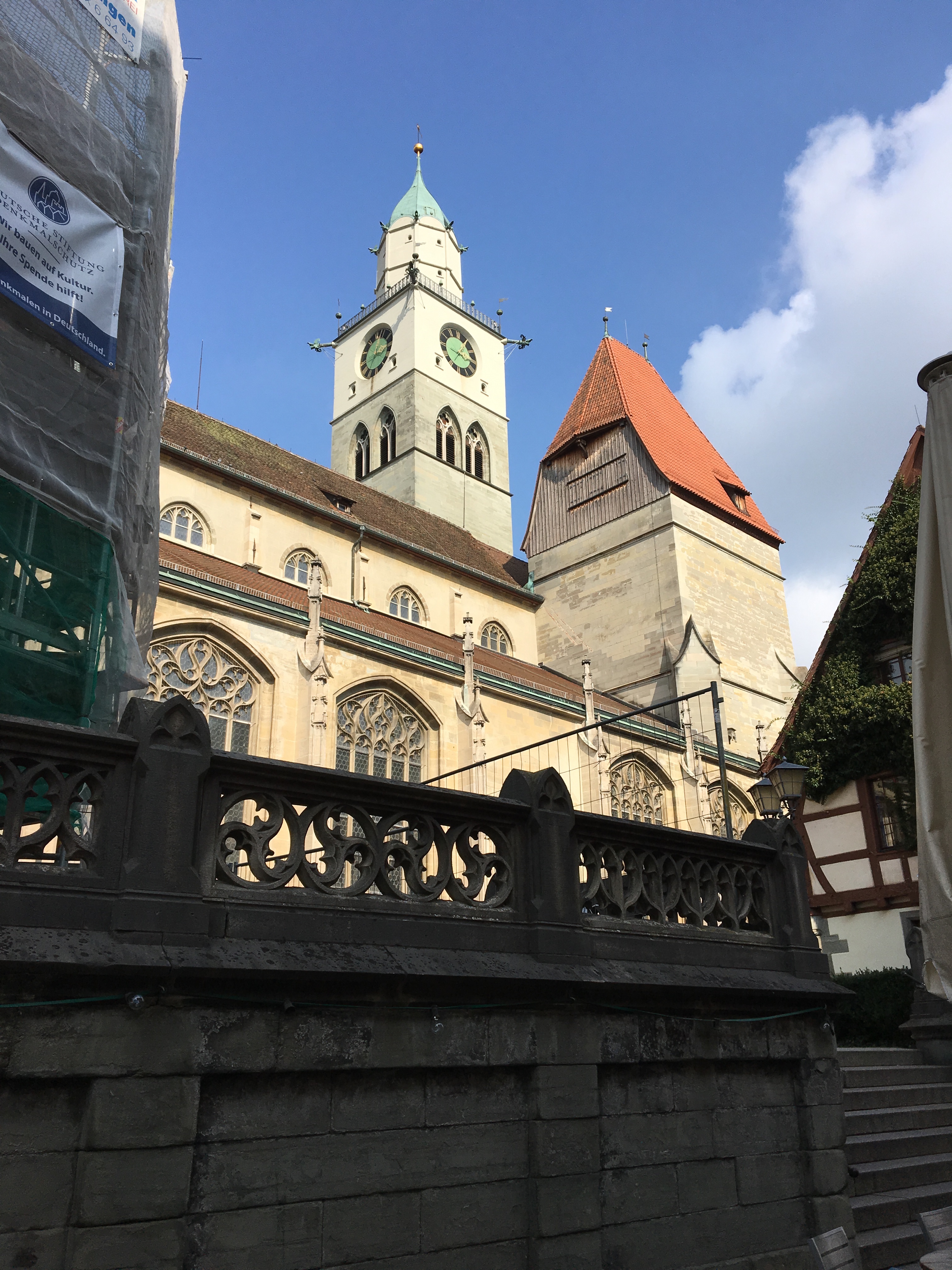 (Lake Constance). (In Überlingen we met up with my sister, who had come from Switzerland.)
(Lake Constance). (In Überlingen we met up with my sister, who had come from Switzerland.)
I had last been in Überlingen as a young boy with my parents. And while there was little that I recognized from that time, I vividly remembered climbing the bell tower of the St. Nikolaus Cathedral with my father. (see picture) As we neared the top, the huge bells suddenly started to ring, scaring me both with their powerful sounds and the vibrations they generated in the tower.
A good part of the city, including our hotel, is located on a sandstone cliff overlooking the lake. The 100 steps of the “Teufelstreppe” (Devil's Stairs) made it less than a 10 minute walk down to the lake. There, we found a “Promenade,” a wide walkway along the lake, leading to the town center with its restaurants, cafés, ship wharves, etc.
We were told that Überlingen has become one of Germany's favorite retirement destinations. That also makes it on of the oldest cities in Germany (in reference to the age of its inhabitants).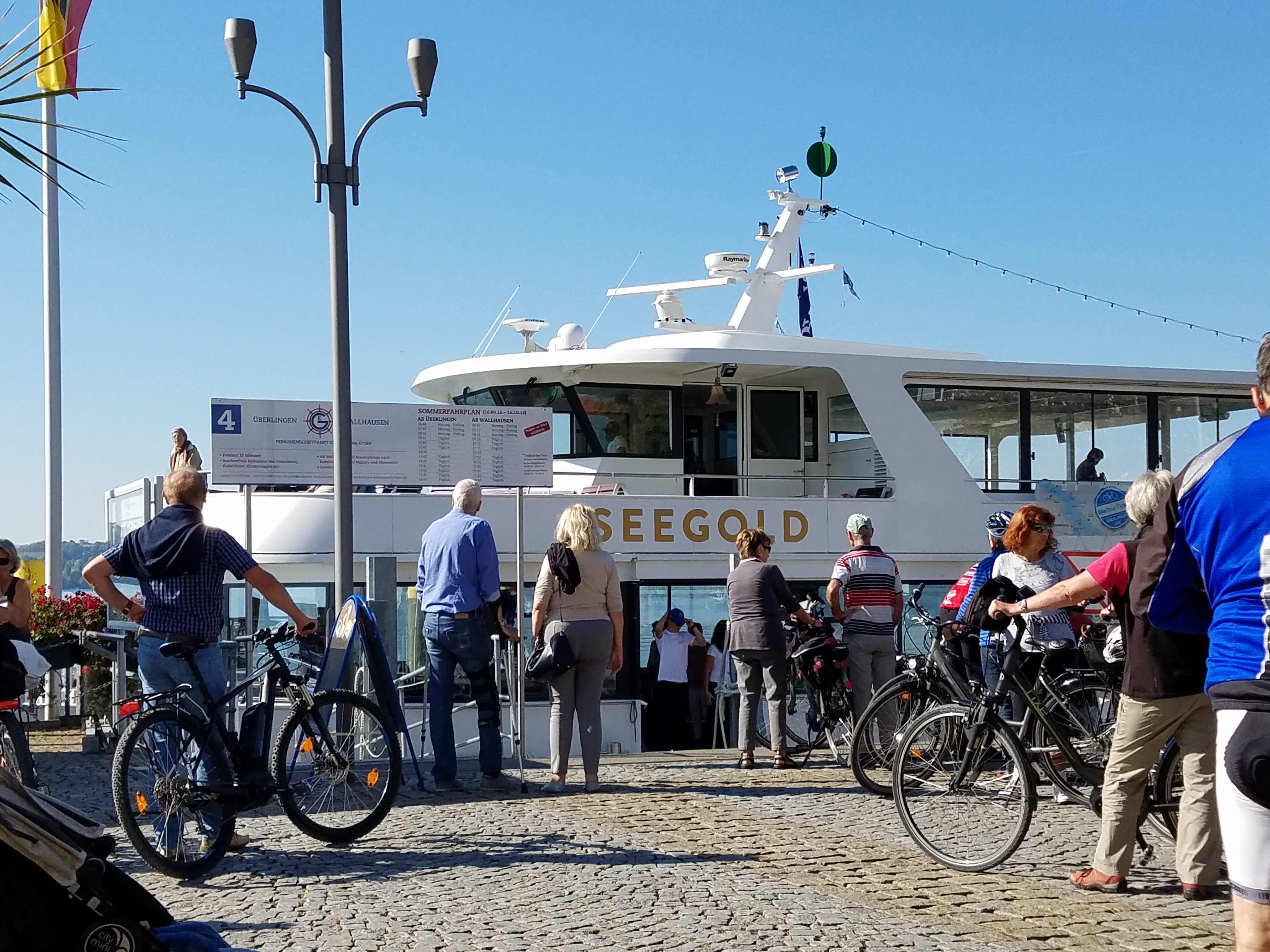 The “seniors” we saw strolling down the Promenade, sitting in cafés, riding their bikes, or waiting to board a ship, all looked fit and active to us. (see picture)
The “seniors” we saw strolling down the Promenade, sitting in cafés, riding their bikes, or waiting to board a ship, all looked fit and active to us. (see picture)
While we were sitting in one of the cafés, we were surprised to see many bikers board a ship. We found out that there are several bicycle organization that organize tours along the “Bodensee-Radweg” (Lake Constance-bicycle path). It calls itself “Europa's beliebtester Radweg” (Europe's favorite bicycle path).
We often took advantage of the wonderful, warm fall weather and enjoyed people-watching while sitting in one of the many outside restaurants. There, we couldn't help but overhear conversations in various German dialects spoken at nearby tables.
Some German Dialects
Überlingen is located in Baden-Württemberg, the third-largest German state, which has close to 11 million in habitants. Stuttgart is its capital and largest city. 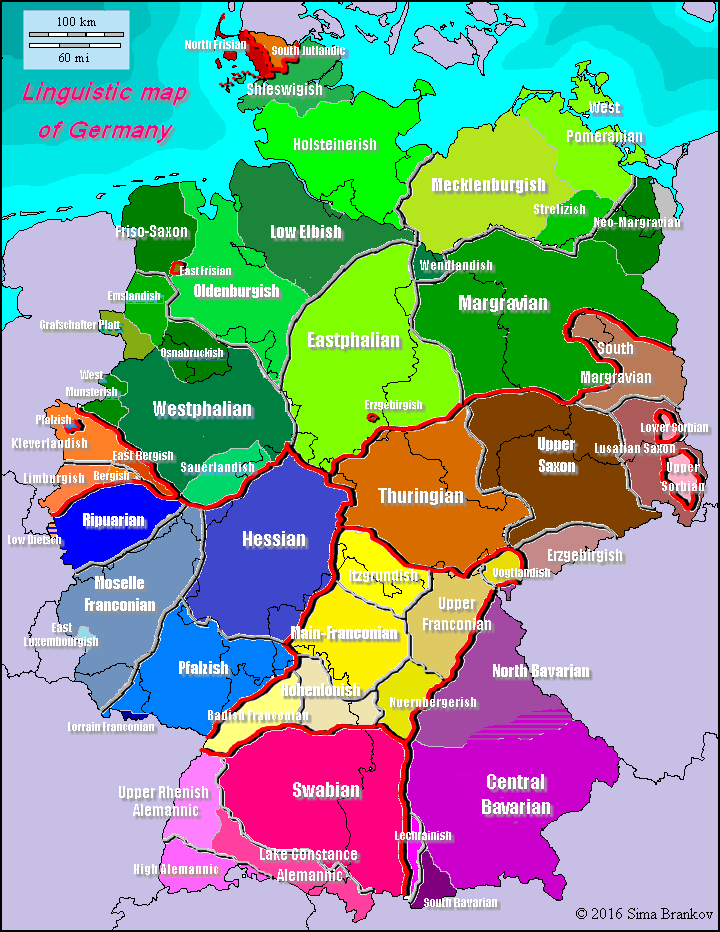
Two distinct dialects are spoken in the state, with various variants: the Alemannic dialect of Swabian and Franconian. Swabian is spoken in the southern part of Baden-Württemberg, up to the border of the neighboring state, Bavaria. Franconian is spoken in the west/northwest along the Rhine including in Mannheim and Heidelberg.
[Note also: The Swiss German language is another variant of the Alemannic dialect. And, Franconian can also be heard in the northern parts of Bavaria [Germany's largest state], around Nuremberg, Bamberg, etc. The most recognizable dialect of the state of Bavaria is Austro-Bavarian, spoken in the southeast of the state and reaching beyond the border into Austria in a continuum of local and regional variants.]
We also heard the very distinct Saxon dialects from regions around Leipzig and Dresden.
And how could I forget the Hessian dialect, spoken around Frankfurt and Bad Nauheim (the city where I spent most of my school years, and subject of an earlier post: Where “Bad” does not mean “bad”...)
You can see the various German dialects on the chart.
Der Bodensee
The Bodensee, or Lake Constance is the 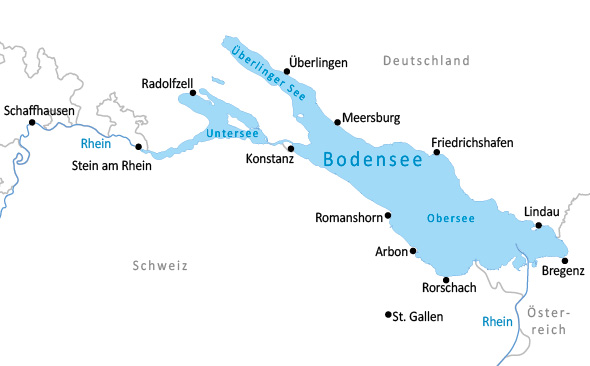 largest lake in Germany and Austria. It is only a little smaller than Lake Geneva, Europe's largest lake, located on the border of Switzerland and France.
largest lake in Germany and Austria. It is only a little smaller than Lake Geneva, Europe's largest lake, located on the border of Switzerland and France.
Lake Constance is also the huge water reservoir which feeds the Rhine, the second longest European river after the Danube.
The Rhine River begins in the Swiss canton of Graubünden in the southeastern Swiss Alps, enters Lake Constance at its eastern Swiss/Austrian border and then leaves it again near Konstanz from the Lower Lake. (Note: It's the town of Konstanz/Constance which gave the Bodensee its English name.)
I have fond memories of the Bodensee, where I started first grade in the town of Friedrichshafen. It was in there that Ferdinand von Zeppelin established the first factory to build his famous dirigibles, the Zeppelins, around 1900. I remember going fishing on the lake with my grandfather.
Later, a sailing trip on the lake with my father, as we ghosted by the Mainau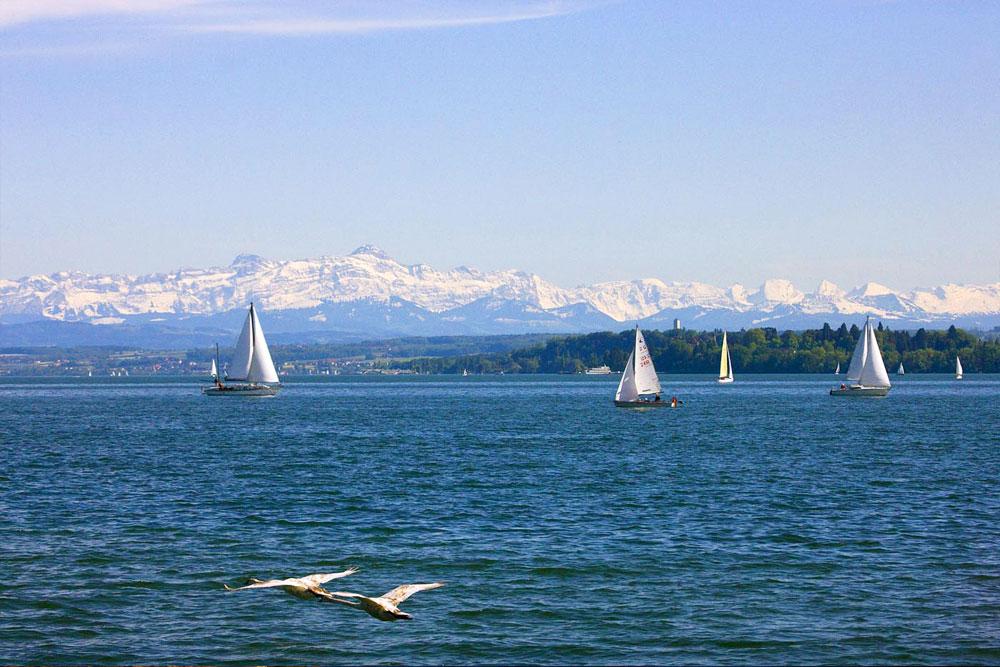 (see picture) at night, made me fall in love with sailing. On clear days you can see the Alps in the background, as in this photo.
(see picture) at night, made me fall in love with sailing. On clear days you can see the Alps in the background, as in this photo.
This time, Ulrike and I took advantage of sunny weather and took several trips with the Bodensee's “Weiße Flotte,” the White Fleet of motor ships, with which you can explore the lake.
There are also two car ferries to take you across the lake: (1) Between Meersburg and Constance and (2) Between Friedrichshafen and Romanhorn (Switzerland). On this Bodensee-Schifffahrt site – yes, the word is spelled with three “f's” - you can download the “Fahrplan” (schedule) for the various seasons.
Our first lake trip took us to the Island of Mainau.
The Mainau
I visited the island first as a young teenager and remember that I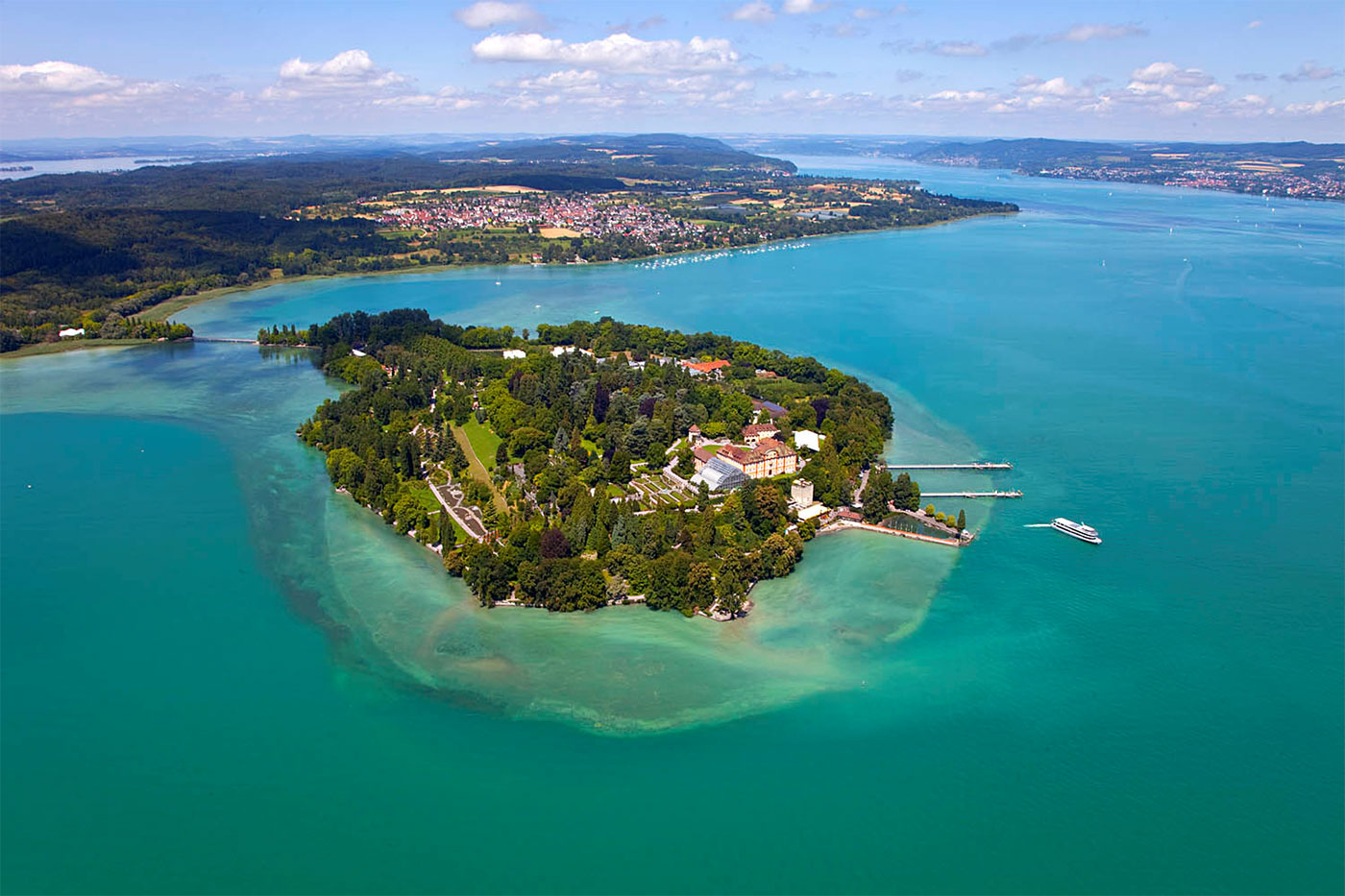 was fascinated by its history. The island has changed owners many times over the centuries.In early years, it belonged to the Order of Teutonic Knights. Then, after falling into private hands, it was purchased in 1853 by Grand Duke Frederick I of Baden to serve as a summer palace.
was fascinated by its history. The island has changed owners many times over the centuries.In early years, it belonged to the Order of Teutonic Knights. Then, after falling into private hands, it was purchased in 1853 by Grand Duke Frederick I of Baden to serve as a summer palace.
Later, through inheritance, the island fell to the Swedish Prince Wilhelm, who in 1932, gave it to his only son, Lennart Bernadotte. He then owned it until 1974, when he transferred it to a foundation.
Currently, Lennart's oldest daughter Sonja and her brother Björn Bernadotte are managing the property. The island is a flowering paradise. Over 30,000 rose bushes of more than 1,200 varieties grow there, and many other kinds of flowers.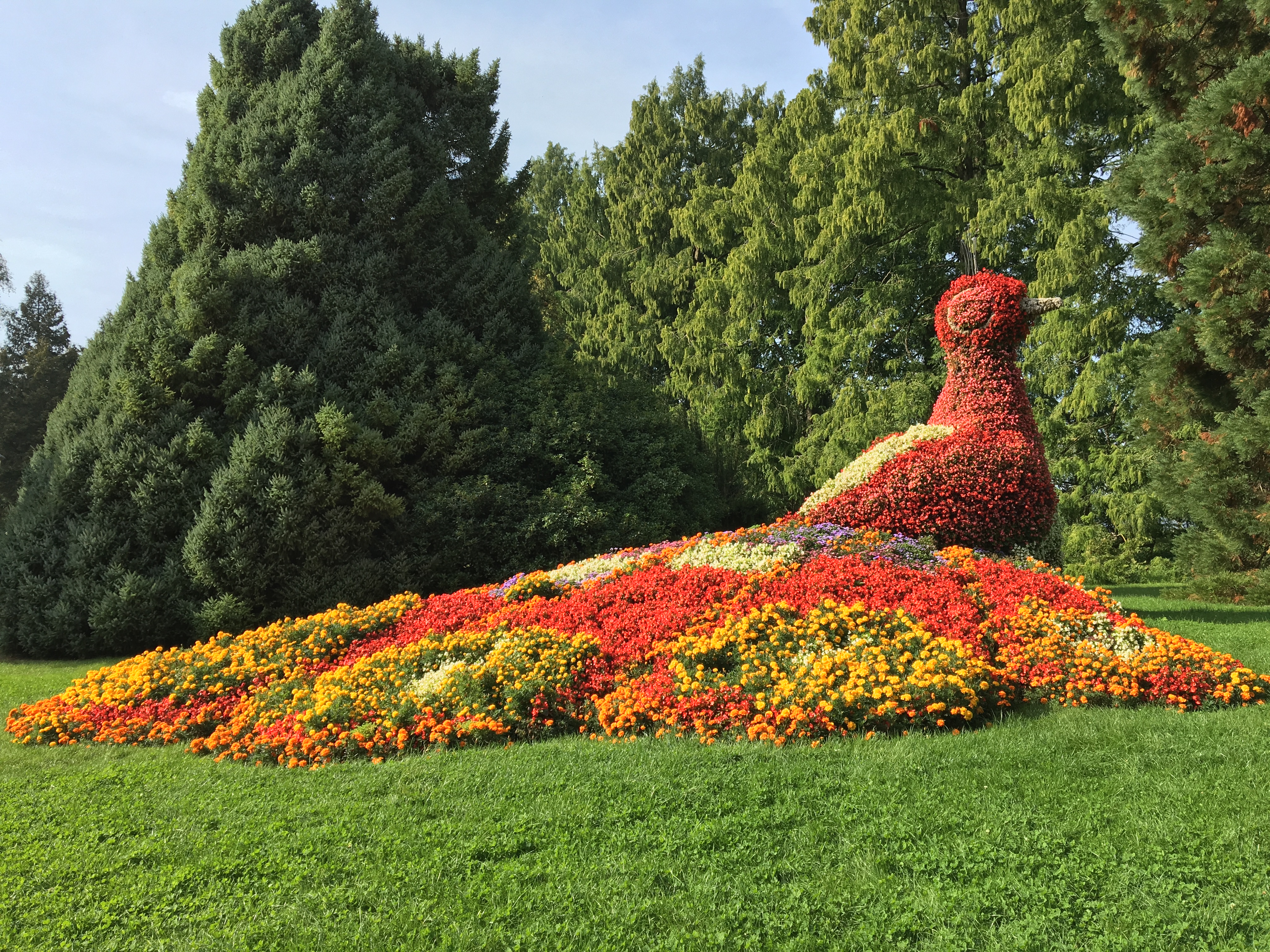
We were there at the time of a dahlia exhibition. Walking through the gardens, we saw stunning arrangements by local garden shops, which where competing for the exhibition honor roll.
The island attracts more than 1 million visitors a year and it serves as a favorite destination for weddings.
Another car trip took took us to the town of Meersburg.
Meersburg
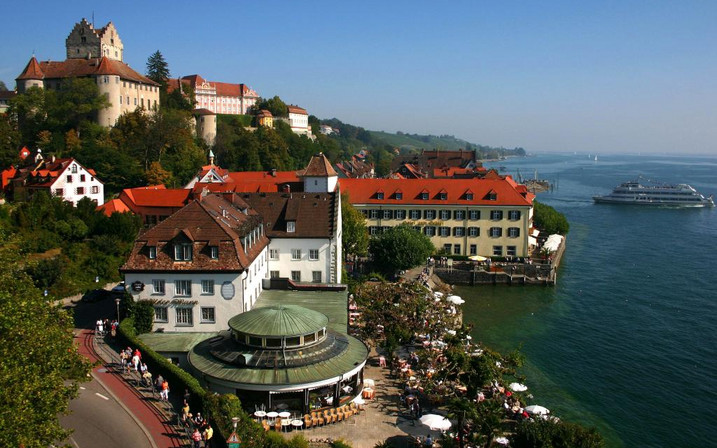 Meersburg is located on the eastern shore of Lake Constance, at the midpoint between Überlingen and Friedrichshafen. We visited the Old Castle, which towers over the town, and learned that it is still the oldest inhabited fortress in Germany. (There is also a Baroque New Castle.)
Meersburg is located on the eastern shore of Lake Constance, at the midpoint between Überlingen and Friedrichshafen. We visited the Old Castle, which towers over the town, and learned that it is still the oldest inhabited fortress in Germany. (There is also a Baroque New Castle.)
The guide, dressed in a medieval costume, took us through the part of the castle that is open to the public and now a museum. It included the Knight's Hall (see picture), the Arm's Hall, the dungeon, etc.
She told us much about the castle's history and the various legends surrounding it. The castle dates back to the 7th century and the Merovigians under King Dagobert I.
In 1268, it became the seat of the Bishop of Constance until the 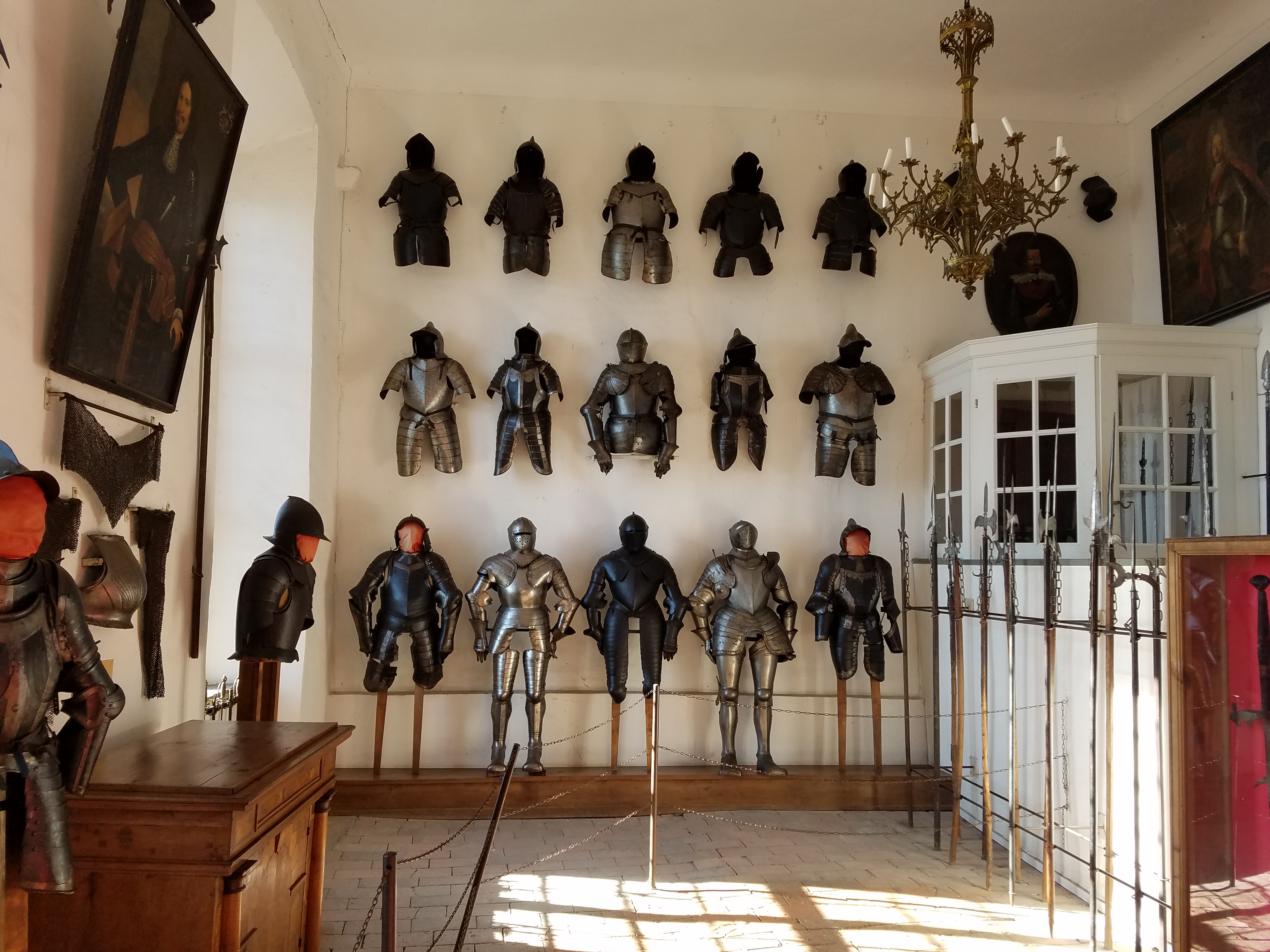 bishops built the New Castle at the beginning of the 18th century.The Old Castle then came under the control of the Grand Duchy of Baden. The collector and business man Joseph von Laßberg purchased it in 1838.
bishops built the New Castle at the beginning of the 18th century.The Old Castle then came under the control of the Grand Duchy of Baden. The collector and business man Joseph von Laßberg purchased it in 1838.
For German literature enthusiasts, the castle is also noteworthy as the sister of Laßberg's wife, the famous poet Annette von Droste-Hülshoff, lived there the last 8 years of her life.
In 1877, Karl Mayer von Mayerfels purchased the castle and established the Medieval Museum. His descendants still live in the building during the summer months.
As in many of the towns along the Bodensee, there is a Promenade along the lake with pleasant cafés and restaurants. The small streets and squares bustle with boutiques, shops, and street merchants.
We just happened pass through when grapes were unloaded at the local winery. That was a colorful spectacle.
Other Sights along the Bodensee
There are many other places along the Bodensee that are worth a visit. I still remember the little town of Unteruhldingen where I visited the “Pfahlbaumuseum” (Stilt-Hause Museum) during my childhood. The stories the guides told us at the time were fascinating
This time, we did not visit the rebuilt village, but we could see the stilt houses from the ship as we docked (see picture). I've already mentioned Friedrichshafen. Wile more of an industrial city (heavily bombarded during World War II because of its airplane and bomb factories), the modern 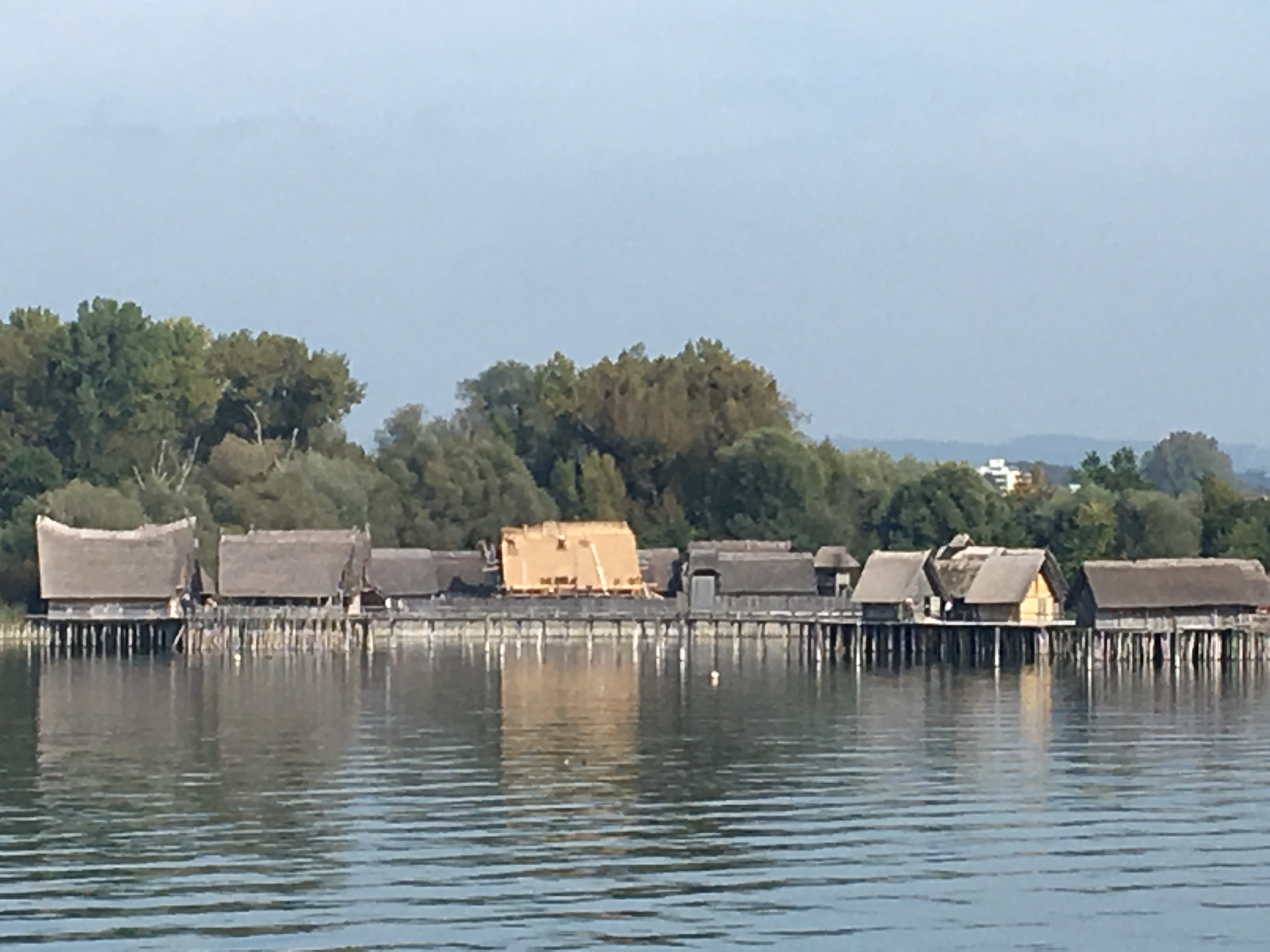 Dornier aerospace museum shows the various Dornier airplane models, engines, satellites, and products of the Airbus Group.
Dornier aerospace museum shows the various Dornier airplane models, engines, satellites, and products of the Airbus Group.
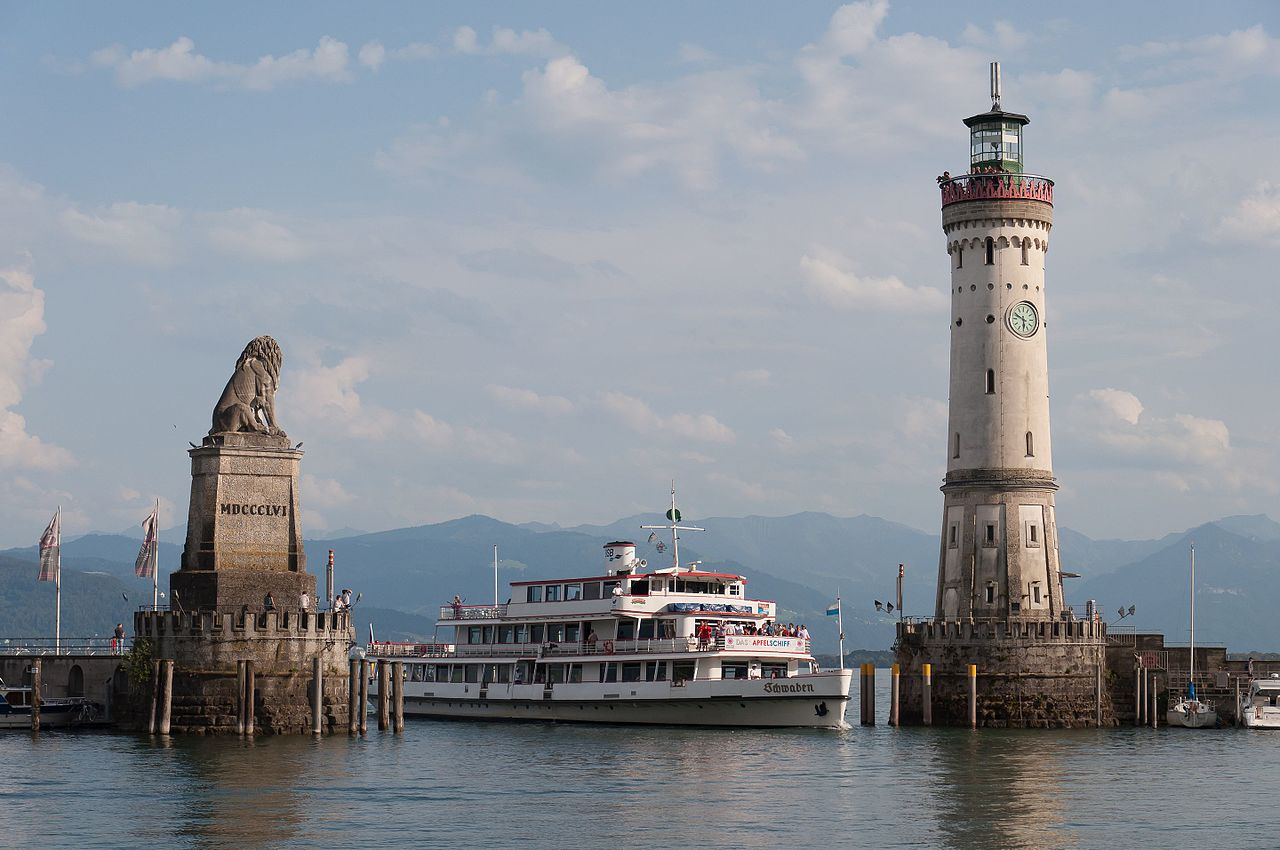 The historic town of Lindau is located on a small island connected by a dam to a strip of land that allows Bavaria access to Lake Constance. The Lindau harbor entrance with the light house and its Bavarian Lion statue (see picture) is a beautiful sight. I remember it well from my youth when we entered or left the harbor on one of the white ships.
The historic town of Lindau is located on a small island connected by a dam to a strip of land that allows Bavaria access to Lake Constance. The Lindau harbor entrance with the light house and its Bavarian Lion statue (see picture) is a beautiful sight. I remember it well from my youth when we entered or left the harbor on one of the white ships.
Traveling just a few miles further southeast, you'll enter Austria and will have reached the end of the lake in Bregenz, the capital of the Austrian state of Vorarlberg.
If you are an opera lover and happen to be there during the months of July and August, be sure not to miss the Bregenzer Festspiele. Most memorable will certainly be a performance on a floating stage in the open-air amphitheater. (But be sure to reserve your tickets early!)
On the other side of the lake, right on the border to Switzerland, lies Konstanz 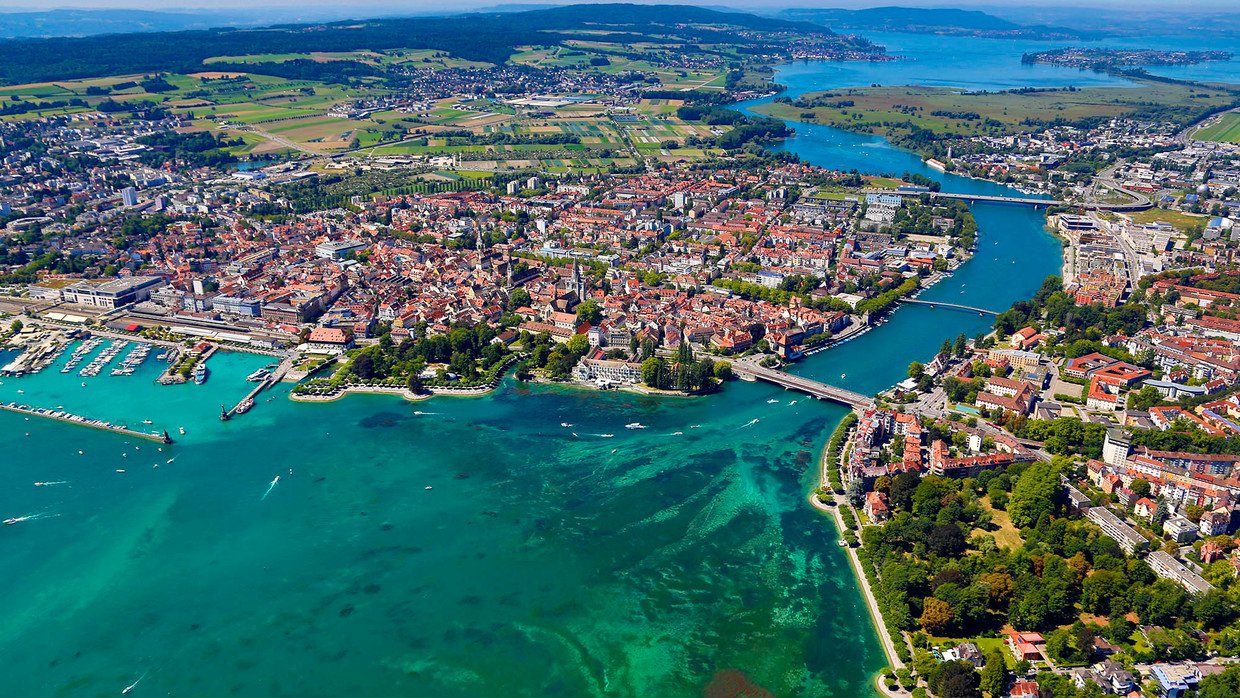 (Constance), a lively university town and for over 1200 years the seat of Catholic bishops.(See photo of Constance, with aview of the "Untersee" and continuation of the Rhine) The city has an interesting history.
(Constance), a lively university town and for over 1200 years the seat of Catholic bishops.(See photo of Constance, with aview of the "Untersee" and continuation of the Rhine) The city has an interesting history.
Konstanz was refused entrance into the Swiss Confederacy in 1460, then joined the Swabian league and became part of the German Empire in 1871.
The city avoided being bombed during World War II by a clever ruse – it left the lights on and allied bombers could not distinguish it from neighboring Swiss towns. The large and well-preserved “Altstadt” (Old town) is dominated by the “Münster” (Cathedral).
Our stay in Überlingen and our various excursions along the lake brought back many vivid memories from my childhood and later vacations at the Bodensee. We can see why this region has become a favorite place in Germany for retirees. Austria and Switzerland are only a boat ride away. The cultural offerings in the nearby towns and cities are amazing. There are many things to see and do in each of the seasons.
You can also follow our European travels with Discoveries in Austria.
Bio: Peter Rettig is the co-founder of Gamesforlanguage.com. He's a lifelong language learner, growing up in Austria, Germany, and Switzerland. You can follow him on Facebook, Twitter and Instagram, and leave any comments with contact.
